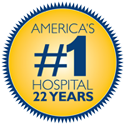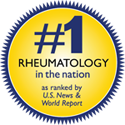Lupus is a disease in which the immune system begins to recognize and attack the body’s own tissues. This phenomenon is similar to “friendly fire” and causes inflammation in different organs of the body. The nature of lupus is highly individualized, and two patients may experience two sets of totally different symptoms. In the United States, lupus affects roughly 1 in 2000 people, and 9 out of 10 lupus cases occur in women. Although the disease occurs in people of all races and ethnic groups, it occurs more frequently in African Americans.
The first symptoms of lupus usually occur somewhere between the teen years and the 30s and may be mild, severe, sporadic, or continual. Common general symptoms include fatigue, fever, and hair loss. Lupus can also affect individual organs and body parts, such as the skin, kidneys, and joints.
The following pages provide introductory information on lupus for patients, loved ones, and health care providers. Think of this as “Lupus primer.”
Understanding the Signs, Symptoms & Diagnosis of Lupus
How Lupus Affects the Body
- Antiphospholipid Antibodies
- Arthritis
- Cardiovascular System
- Immune System
- Kidneys
- Lungs
- Nervous System
- Skin

